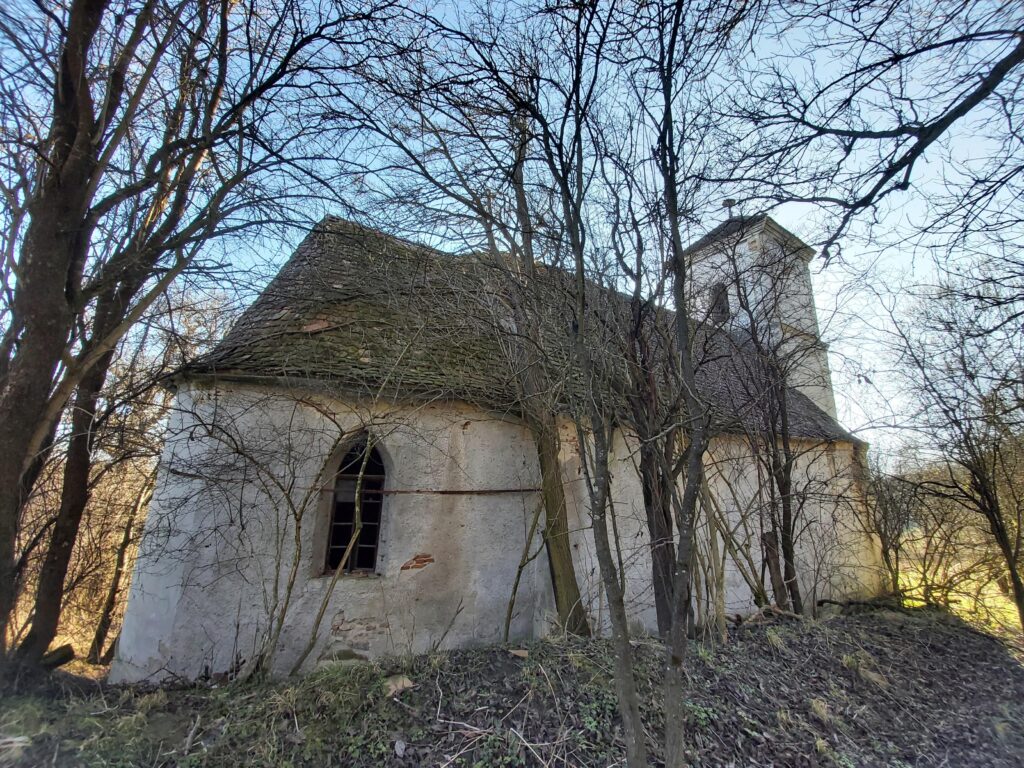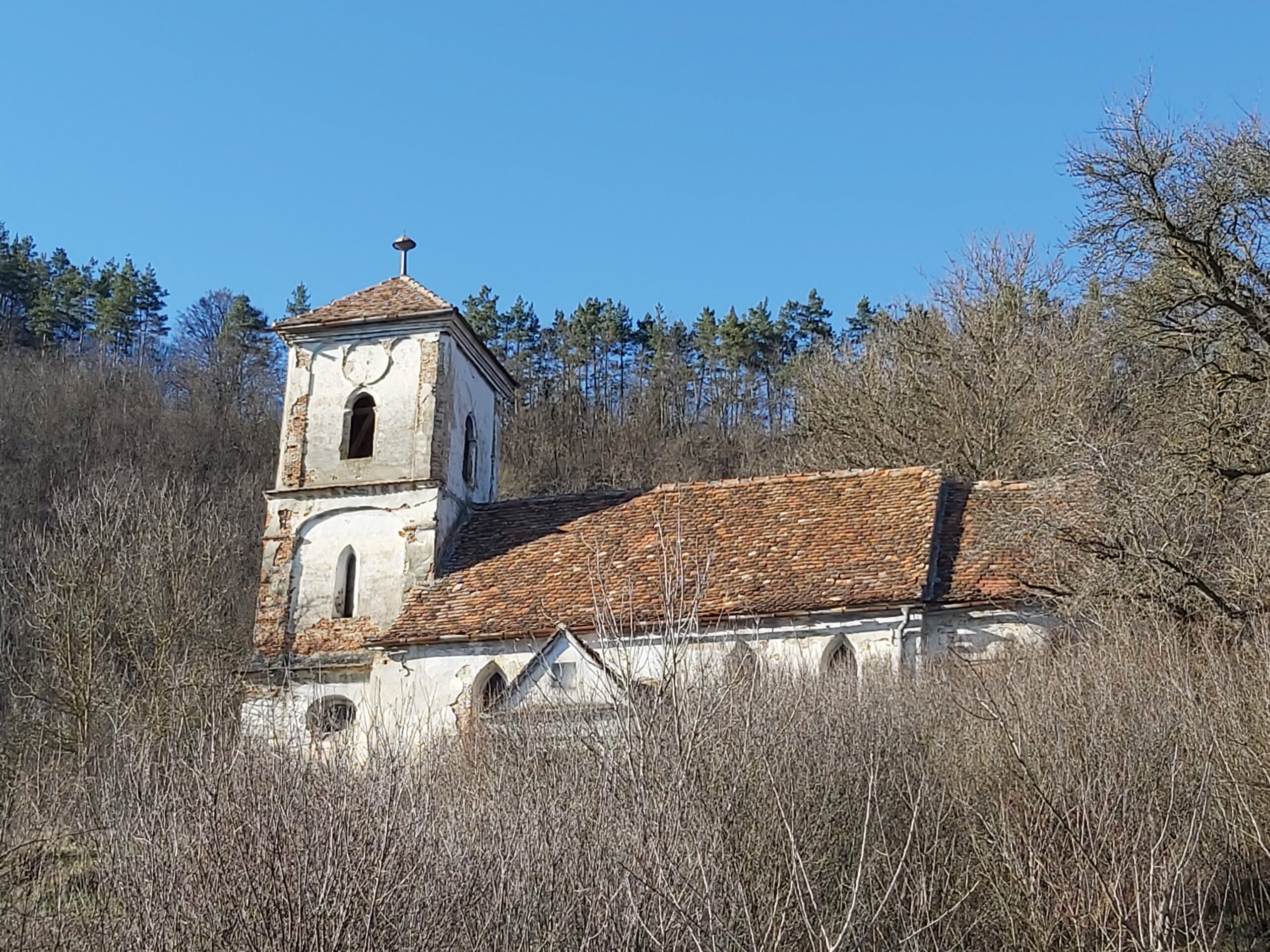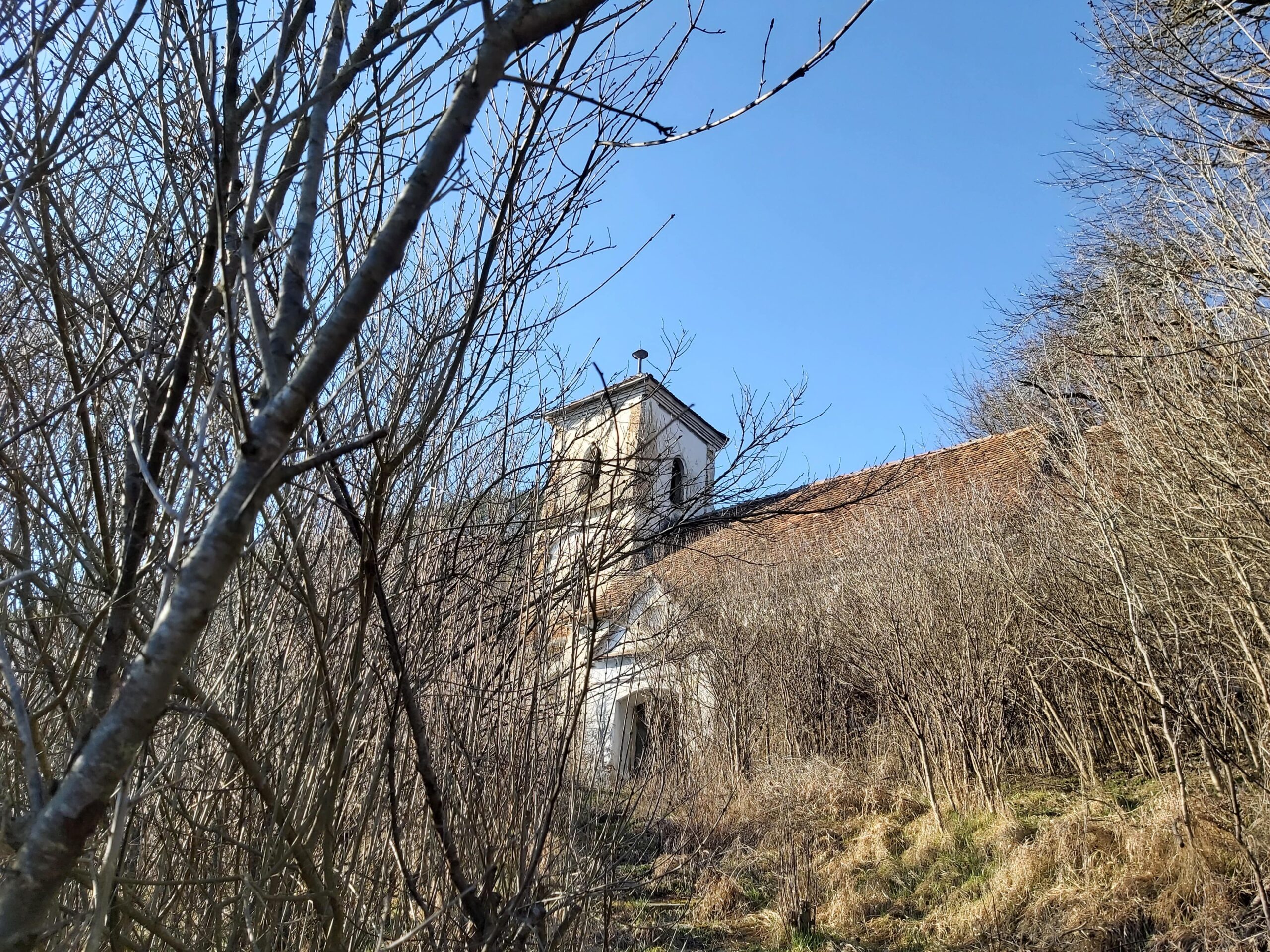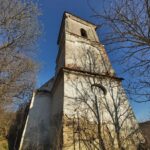The Evangelical church in Răvășel was built in 1825
Răvășel was first documented as early as 1391 (Rawas, Rauas, Rawasd). It was originally inhabited by Roman Catholics who later converted to Lutheranism. The first church may have been built in the 15th century (1403, Cristianus plebanus de Rauas) or the following century. Unfortunately, no precise information is available. The current church was built in 1825, replacing the former fortified church.
From the inventory of the former church, a bell cast in the second half of the 14th century remained as a legacy. Bearing the inscription „O rex glorie veni cum pace” (Oh, glorious King, come with peace), the bell’s existence was mentioned in 1878 (Fabini 1998, p. 613). According to the 1910 census, over 200 Saxon Evangelical Christians heard its call. Today, none remain in the village of 140 inhabitants.
The Evangelical church in Răvășel is sliding downhill
The altar, completed in 1751, was salvaged and relocated to another Evangelical church in Transylvania, in Mediaș. Similarly, the organ, dated 1791 and crafted by the German organ builder Johannes Hahn from Levoča (modern-day Slovakia), was transferred to the Evangelical church in Sebeș, Alba County (2003). Only the church, with its modest yet elegant furnishings, remains in Răvășel.
Due to landslides, the Evangelical church in Răvășel is tilted. The sloping floor gives the impression that the entire structure is sliding downhill. Furthermore, the broken windows have become an entryway for birds. The roof is frail and appears on the verge of collapse. Sadly, the entire perimeter of the church is „choked” with dense vegetation and weeds.

Abandoned, emptied, and left with only its lonely altar, the Evangelical church in Răvășel can still be saved with swift intervention. But is there the will and commitment to do so? It’s hard to believe…























